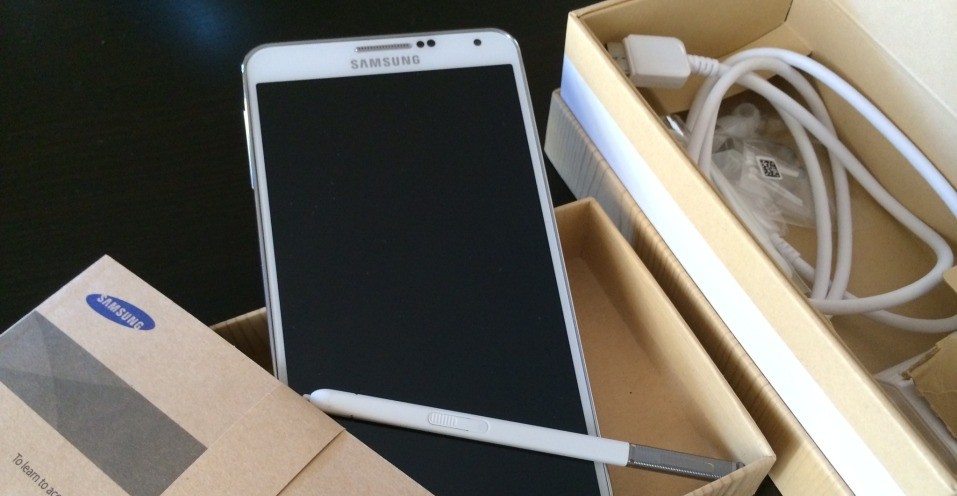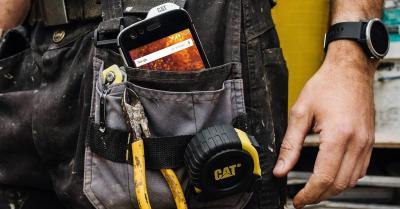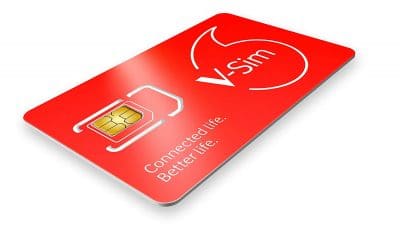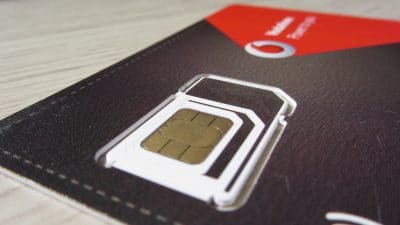Best Phones for People with Bad Eyesight
Most of us take our mobile phones for granted. But if you, or someone you know, has poor eyesight, then a phone could be less of a convenience and more of a problem. Fortunately, there are plenty of options out there for those who have bad vision, or even no vision at all, and we’re here to guide you through the process of finding the right phone. We’ve even included some great model recommendations!
Table of Contents
Why a Specialised Phone?
This could seem rather obvious, but for the those with poor or no eyesight, a mobile phone can be a challenge. And yet a mobile is more than just a convenience or something to play around with, it’s a lifeline. Those with poor eyesight can use a mobile to communicate, to get help if necessary, and to socialise.
Sure, having bad vision can make mobile use a little more difficult. But that doesn’t mean it’s impossible. Whether you’re shopping for yourself, for someone who’s legally blind or simply has bad eyesight, an elderly relative or someone quite young, there are definitely plenty of options when it comes to suitable phones.
What Are My Options?
There are really two main options here, and which one is right for you is really going to depend on the user’s needs as well as how bad their vision actually is, and how they plan on using the mobile in question:
Regular Smartphones
Hold on a second, a regular smartphone? Well, yes. A decent smartphone will allow you to switch font sizes to make the print bigger, larger screens are easier to see, the advent of digital assistants and voice recognition software mean that typing may not even be necessary, and there are many apps around that are designed to help those that have poor vision. In fact, a regular smartphone could be a decent choice, depending on the end user.
Pros: Easy to get hold of, lots of options, ability to use voice recognition and make the print bigger or magnify screens are all great selling points.
Cons: May not always be suitable for those who are completely blind, and may be too confusing and complex for older users.
Best For: Those with poor vision rather than no vision, more tech-savvy users.
Specialised Phones
The other option is to go for a phone that has been specially designed for those with poor vision. There are fewer choices here, but there are definitely options. There are three basic kinds of these sorts of this type of feature phone. A flip phone will flip open, meaning the screen is protected but this could be fiddly for older hands. A candy bar phone is simple to use, but that screen isn’t protected. And a semi-smart phone is basically a smartphone that’s been designed to be easier to use for customers who are older or who have disabilities. In general, you’ll find big buttons, clear, easy to read text, and maybe some extra features like SOS buttons and the like.
Pros: Designed for those with poor vision so there’s no messing around with settings, generally cheaper than standard smartphones.
Cons: Not to feature heavy, so might not be for those looking for a full modern phone experience.
Best For: Those who don’t want a full smartphone, or find them too difficult to use, and those who have no vision.
I am Blind – Which Phone Should I Choose?
This post is written for people with poor eyesight or impaired vision. However, we do have one recommendation for a device and that’s the iPhone. Of course, it depends how comfortable you are with technology in general but due to it’s myriad of accessibility options, it is hard to go wrong with an iPhone.
The operating system includes a screen reader, called VoiceOver, as well as a number of other accessibility features that you can learn about here. We have spoken to a number of blind customers who have used both Android and iOS devices but always return to the iPhone despite the often hefty price tag.
What Do I Need to Think About Before Buying?
There are a few special needs that you’ll need to think about before you buy. These are going to depend on the end user and how bad his or her vision is:
- Screens and Vision: The larger a screen is, the easier it’s going to be to see. Yes, most modern smartphones will allow you to make text size larger, but this might mean you need a bigger than normal screen in order to read properly. It’s worth taking a trip to a physical store just to have a look at screen size and text size. And if you’re opting for the specialised phone route then know that screens are generally smaller, though keypads are larger, which could be a consideration.
- The necessity of Speech: You might also want to consider a phone’s ability to speak and recognise speech. If a user can’t see then being able to “speak” to a phone can be important. Most modern smartphones come with a digital assistant and voice recognition. Specialised phones may or may not come with voice to text recognition, and some will read aloud numbers or letters as they’re keyed in, which can be useful.
- Ease of Use: Depending on who you’re buying for, ease of use may be important. Older users may find a modern smartphone just too intimidating. And those with very low vision might struggle with a smartphone too.
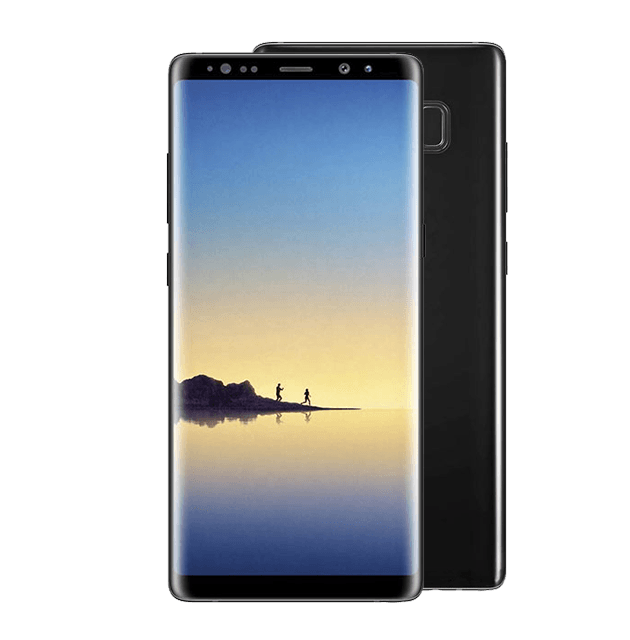
Our Top Pick
Samsung Galaxy Note 8
If you want something that you can really read then you might want to consider heading into the phablet section of the market. For you, that means a big screen that’s easy to read. The king of phablets at the moment (at least until the release of its successor later this year) is the Samsung Galaxy Note 8. With its massive screen and super high specs, the Note 8 is a high-end phone that just happens to be perfect for those with less than perfect vision. You’ll spend a pretty penny, but it might be worth it to get a large screen that’s easily visible.
What Features Should I Be Looking For?
So, with these considerations in mind, what kind of features should you be looking for? What should you expect to see on a great phone for someone with impaired vision? Some of these features are obvious, others less so:
- Screen Size: The larger a screen is, the easier it is to read, it’s just that simple.
- Screen Contrast: And a screen with adjustable contrast (usually found on a smartphone) can make a huge difference in how easy text is to read too.
- Button Size and Style: If you’re opting for a phone with physical buttons then they should be large and rounded (not flat) to ensure that they’re easy to find and orient.
- Speech Recognition: As we mentioned above, speech recognition is a great way for those with very low vision to utilise a mobile. Again, most modern smartphones will have this.
- Battery Life: Given that it’s going to be tough for some with poor vision to see batter capacity, a phone with decent battery life is going to be a must. You want something that will last all day so it can be habitually charged in the evening.
- Sturdiness: There’s a fair chance that a user with poor vision might drop a phone, accidentally sit on it, or put things on top of it, so the sturdier and more rugged the better!
- Simplicity and Intuitiveness: And again, ease of use is important, so take a look at how intuitive a phone is to use before buying.
And The Other Stuff
What about extra features? The above are all important, but depending on the end users needs, there may be other things that are equally important, or that are just nice to have:
- SOS or Panic Buttons: Phones that have been specially designed for vision impaired users or older users often have SOS buttons. This is one button that when pressed will contact emergency services or an emergency contact. An SOS button can give great peace of mind.
- Good Audio: Given that there’s a fair chance that a vision impaired user is going to be listening more than watching, decent speakers are definitely worth looking out for, or even a good Bluetooth connection so that headphones can be added.
- Operating System: Specialised phones tend not to use well known operating systems like Android or iOS. However, going for a smartphone that does use Android or iOS will give the user access to apps that have been specially designed for vision impaired users (text magnification apps, or text to speech apps) that may mean the user gets more use out of a phone.
How We Selected Our Top Models
But before we get to our actual recommendations, let’s take a look at how we actually chose them. We searched hard in both categories, coming up with a mix of regular smartphones that are suitable as well as specialised phones. And our first concern was age since newer models tend to have better specs and better update support. We did also look at the price, however, to ensure that there was something for every budget.
We looked at specs and any special features that we thought would be relevant so that there’s a good phone for every level of vision impairment as well as every type of user. And we also considered customer reviews and feedback, because knowing how satisfied other users are is a great way to know how reliable a phone is (sometimes those spec numbers don’t tell the whole story). We spend plenty of time on phones, phone users, phone experts, and tech specialists, so we got plenty of feedback there as well!
Right, so what are our choices? We’ll take you through our eight recommended models, starting with appropriate regular smartphones and then moving on to more specialised phone versions.
The Top 8 Smartphones for Bad Eyesight
| Rank | Product | Features | Pros | Cons | |
|---|---|---|---|---|---|
|
1
|
Galaxy Note 8
|
|
|
|
|
|
2
|
Moto G6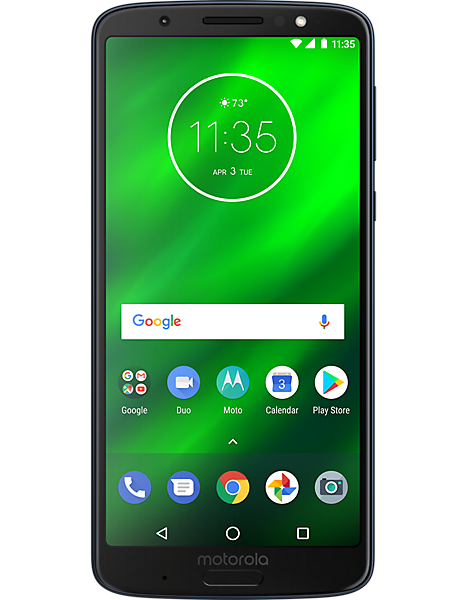
|
|
|
|
|
|
3
|
iPhone SE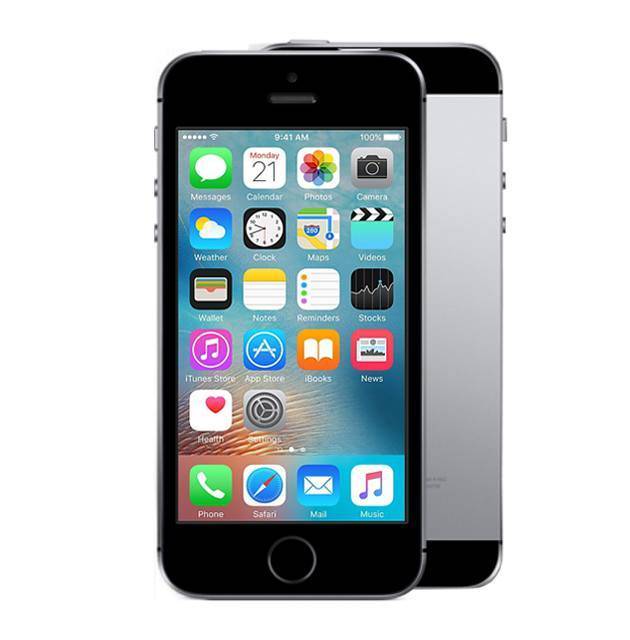
|
|
|
|
|
|
4
|
Alcatel 3C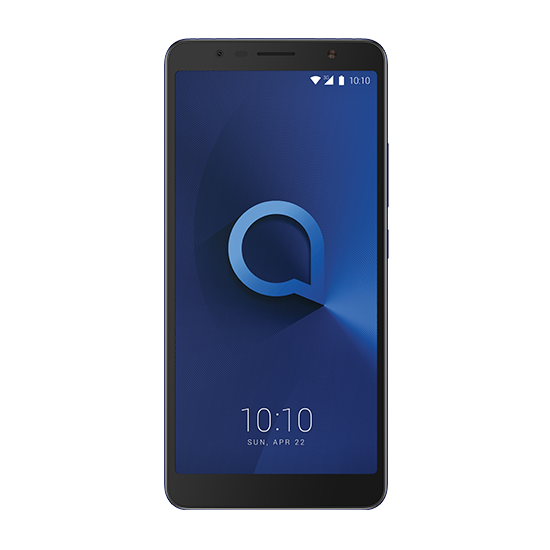
|
|
|
|
|
|
5
|
Doro 8040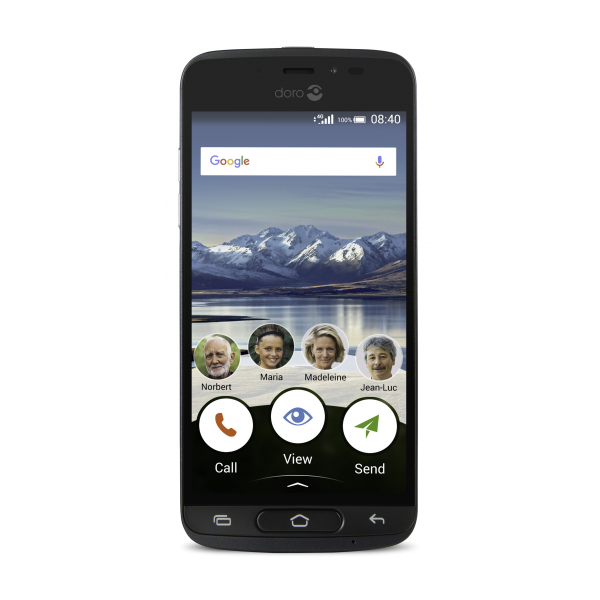
|
|
|
|
|
|
6
|
Binatone Blade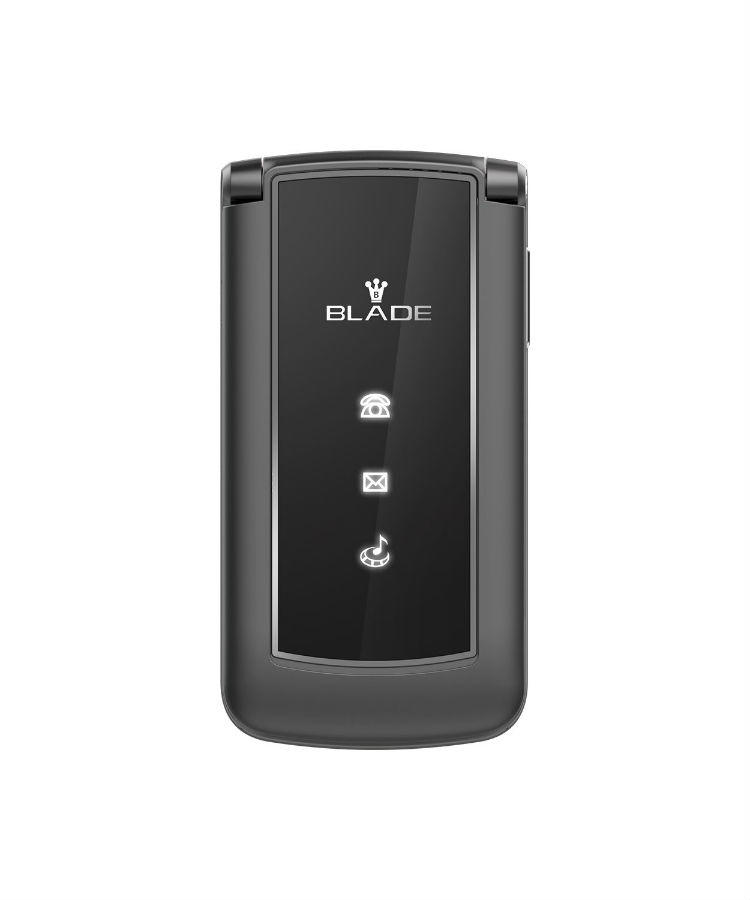
|
|
|
|
|
|
7
|
Binatone M250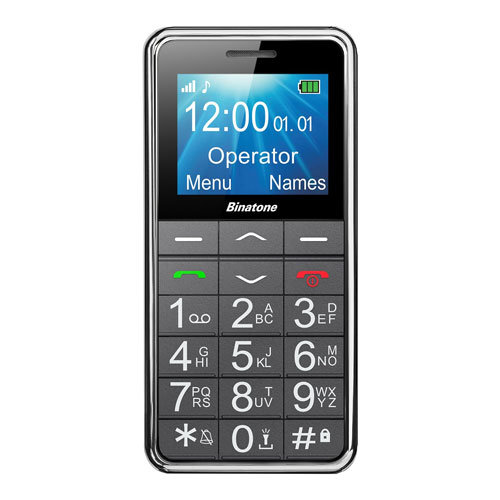
|
|
|
|
|
|
8
|
The Big Digit SOS Phone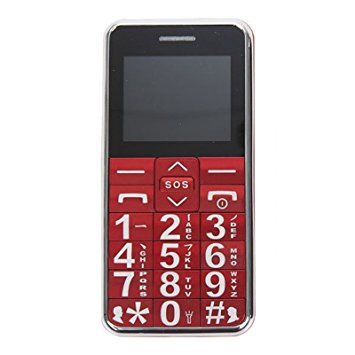
|
|
|
|
In-Depth Look
Now that we’ve gone over the features and considerations you should be looking for, which model should you choose? Well, there are plenty to opt for, and we’ve gathered together some of our favourites to help you make that big decision.
The Galaxy Note 8 (Smartphone)
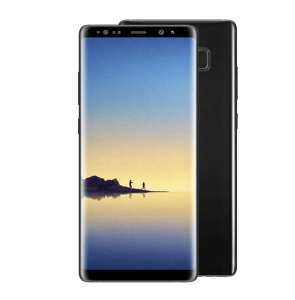
Screen Size: 6.3 inches
Max. Battery Life: Up to 22 hours of talk time
Camera: Dual 12 MP rear camera, 8 MP front camera
Weight: 195 grams
If price is no object, then the Galaxy Note 8 is going to be a fantastic buy. It’s a top end phablet with a huge screen and lots of great specs and features. Poor vision or not, the Note 8 is simply a brilliant phone. But if you’re shopping for someone with bad eyesight then that huge HD display is going to be a big selling point.
You get loads of power as well, with octo core processing and 6 GB of RAM, so the Note 8 is super fast. And there are brilliant cameras, as well as the latest Android operating system which will allow you to change text size and font as well as to zoom in on screens, and features great voice recognition technology. And with 64 GB of internal memory (as well as an SD card slot for up to 512 GB of extra storage) there’s loads of room for all those handy vision impaired apps. The device is even waterproof, so an accidental spill or fall into water should be no problem.
The only real downside to the Note 8 is the price tag, it doesn’t come cheap. Other than that though, it’s a fantastic buy.
Pros
- Huge HD screen
- Robust and waterproof
- Lots of storage
Cons
- Very pricey
- On-screen keyboards may be too small for some
The Moto G6 (Smartphone)
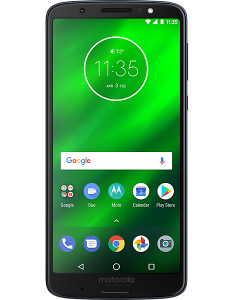
Screen Size: 5.7 inches
Max. Battery Life: Unknown
Camera: Dual 12 MP rear camera, 8 MP front camera
Weight: 167 grams
If the Note 8 is a little rich for your taste, then the Moto G6 should be right up your alley. It’s a solid mid range phone that doesn’t cost the earth. But it still features a satisfyingly large HD display, making this a very good choice.
In terms of power, you get octo core processing and 4 GB of RAM, so it’s pretty fast. Again, you get the latest Android version with great voice recognition tech, ability to change font and text size and to zoom in on screens. There’s plenty of internal storage (64 GB) as well as an SD card slot for up to 256 GB of extra memory to fit all those apps. And though the G6 isn’t waterproof it is splash proof, as well as being fairly chunky and robust in the hand.
On the downside, the screen is a little smaller than the Note 8 and the onboard speakers aren’t the best around, though they’re clearly audible.
Pros
- Large HD display
- Plenty of storage
- Robust
Cons
- Speakers aren’t the best
- Not the biggest screen around
The iPhone SE (Smartphone)
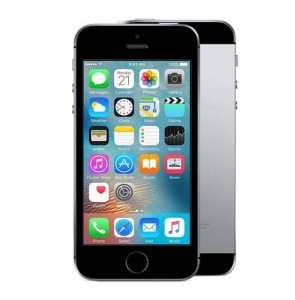
Screen Size: 4 inches
Max. Battery Life: 14 hours talk time, 240 hours standby
Camera: 12 MP rear camera, 1.2 MP front camera
Weight: 113 grams
For an alternative mid-range buy, the iPhone SE could be a good choice. It does have some disadvantages, but the big plus of an iPhone is its intuitive interface. The SE is incredibly simple to use, which could be a big selling point depending on who you’re buying for.
The screen is 4 inches, with good definition. You get dual-core power and 2 GB of RAM, so the SE is fast enough to get the job done. There are some solid cameras. And the latest iOS version does allow for zooming and playing with text size, and of course, Siri has awesome voice recognition. There’s plenty of memory too, depending on which version you buy, though there’s no SD card slot for extra storage.
The downside here is that the screen could be a little small at only 4 inches. And the Apple Store has fewer vision impairment apps than the Android Play Store. But the ease of use of the iPhone SE and the VoiceOver capability could still make it a great choice.
Pros
- Simple and intuitive to use
- Great voice recognition
- Plenty of storage
Cons
- The screen is a little small
- Fewer vision impairment apps on the Apple Store
The Alcatel 3C (Smartphone)
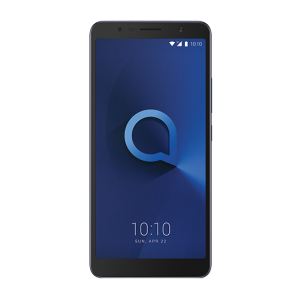
Screen Size: 6 inches
Max. Battery Life: Unknown
Camera: 8 MP rear camera, 5 MP front camera
Weight: 169 grams
For our last regular smartphone choice we’ve got an amazing budget model, so if you don’t have much to spend, this is the phone for you. The Alcatel 3C has an incredible 6-inch display, which is unbelievable on a budget phone and is a real selling point here.
You get enough power to stop lag with quad-core processing and 1 GB of RAM. You get decent little cameras as well. You’re running a slightly older version of Android (7 rather than 8), but you still get voice recognition, ability to size text, and to zoom in. And there’s 16 GB of memory, with an SD card slot for up to 128 GB of extra storage. Not bad at all.
Downsides? At this price, there really aren’t that many. The on-screen keyboard is a little fiddly, but you can download another. The screen isn’t full HD, but you can adjust the contrast for better viewing. And for around £100, this is a fantastic deal.
Pros
- Big screen
- Good storage
- Voice recognition and text sizing
Cons
- Fiddly on screen keyboard
- Screen not Full HD
Doro 8040 (Specialised Semi-Smart Phone)
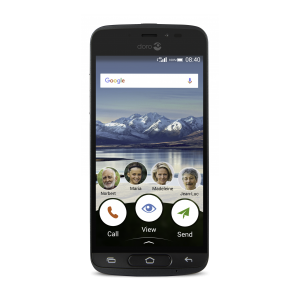
Screen Size: 5-inch touchscreen
Max. Battery Life: 550 hours standby time
Camera: 8 MP rear and 2 MP front
Weight: 165 grams
The Doro 8040 is a great compromise option between a specialised phone and a regular smartphone. It does have a large screen, and a touchscreen interface, as well as internet access and the ability to download some of those all-important vision impairment apps. But it’s got a few special features as well.
The screen is bright and high contrast, making it easier to see, and there’s voice recognition as well. The interface has been simplified, meaning it’s more intuitive and easier to use, and there are some decent cameras on board. Plus, there’s an emergency assistance button as well. This can be programmed with up to five numbers and in case of emergency, those numbers will be called in a cycle and repetitively until help is sent. The 8040 is even hearing aid compatible if that’s an issue.
On the downside, we’ve definitely seen bigger screens. And though the interface is simplified, it could still be a little too much for someone who’s never used a smartphone before. But on the whole, the Doro 8040 is a great little compromise.
Pros
- All the features of a regular smartphone
- Assistance button
- Voice recognition and high contrast screen
Cons
- Could be too complicated for some users
- Not the biggest screen we’ve seen
Binatone Blade (Specialised Flip)
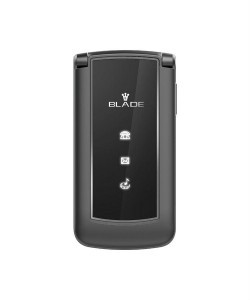
Screen Size: 2.4 inches
Max. Battery Life: 3 hours talk time, 120 hours standby time
Camera: 0.3 MP
Weight: 50 grams
Simplicity could be key in your decision, and if so, the Binatone Blade could be a great choice. It’s a flip phone, meaning that it’s nice and robust, and answering calls is as simple as flipping it open (easier than hitting an answer key for the vision impaired). There’s also a number keypad rather than a touchscreen, which could prove easier to use.
The screen is small, but it’s not a touchscreen, and it’s high contrast with large text making it easier to read. You get the ability to add extra memory (up to 32 GB), so storage shouldn’t be an issue. And the bright flashy colours (including red) make the Blade easy to find as well. It’s a simple phone, but it’s very good at what it does.
On the negative side, the keys are a little flat which might make them tougher to use, and there’s no emergency or panic button here. There’s also no real internet access and no ability to download apps. However, the Blade is affordable and intuitive, making it a decent choice.
Pros
- Easy to read, high contrast screen
- Plenty of storage
- Bright colours and easy to answer calls
Cons
- Flat keys aren’t ideal
- No emergency button, voice recognition, or apps
Binatone M250 (Specialised Candy Bar)
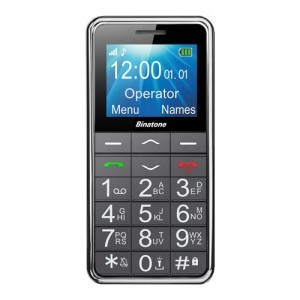
Screen Size: 1.7 inches
Max. Battery Life: Unknown
Camera: None
Weight: Unknown
Another simple choice for you, the Binatone M250 is one of the most basic phones around. But that just makes it less confusing and easier to use. And it is designed with older users in mind, meaning it’s optimised for those that may have poor vision.
Again, the screen is small, but it’s not a touchscreen and it’s high contrast with extra large text to make it simple to read. The numbered keypad is large and raised, and there’s a setting that lets the numbers speak when pressed so you know the right number is being called. There’s an emergency contact button as well that works in the same way as the one mention on the Doro phone above.
Simple could be a negative as well though, since there’s no internet connection here, no voice recognition, no apps, no QWERTY keyboard and not even a camera. But if you’re looking for a phone that calls and texts and can easily be used by even those with no vision, then the Binatone M250 is going to be a good bet.
Pros
- Intuitive and easy to use
- Speaking number option and big, raised keypad
- Emergency button
Cons
- No voice recognition or apps
- Could be too basic for some users
The Big Digit SOS Phone (Specialised Candy Bar)
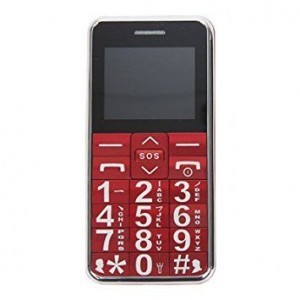
Screen Size: Unknown
Max. Battery Life: 10 hour talk time, 100 days standby time
Camera: None
Weight: Unknown
Finally, the Big Digit SOS phone is a big button phone that’s been specifically designed for the vision impaired and the legally blind. This in itself could make this device a great buy, though it is a simple device with no added extras.
The keypad is huge and raised, making it very easy to navigate. And again, you have the option of speaking numbers so you know the right number is being called. There’s a big SOS button, just in case of emergency, and it can be programmed to call not just emergency services but friends, carers or relatives as well.
The down side here, just like with many basic phones, is that it could be too basic. There’s no internet, no voice recognition, no apps, and no camera. But the Big Digit phone is very easy to use, and could be just what you’re looking for, particularly for someone who has no vision at all.
Pros
- Speaking number option
- Large, raised keypad
- SOS button and emergency contacts
Cons
- No voice recognition, no apps
- Maybe too basic for some

